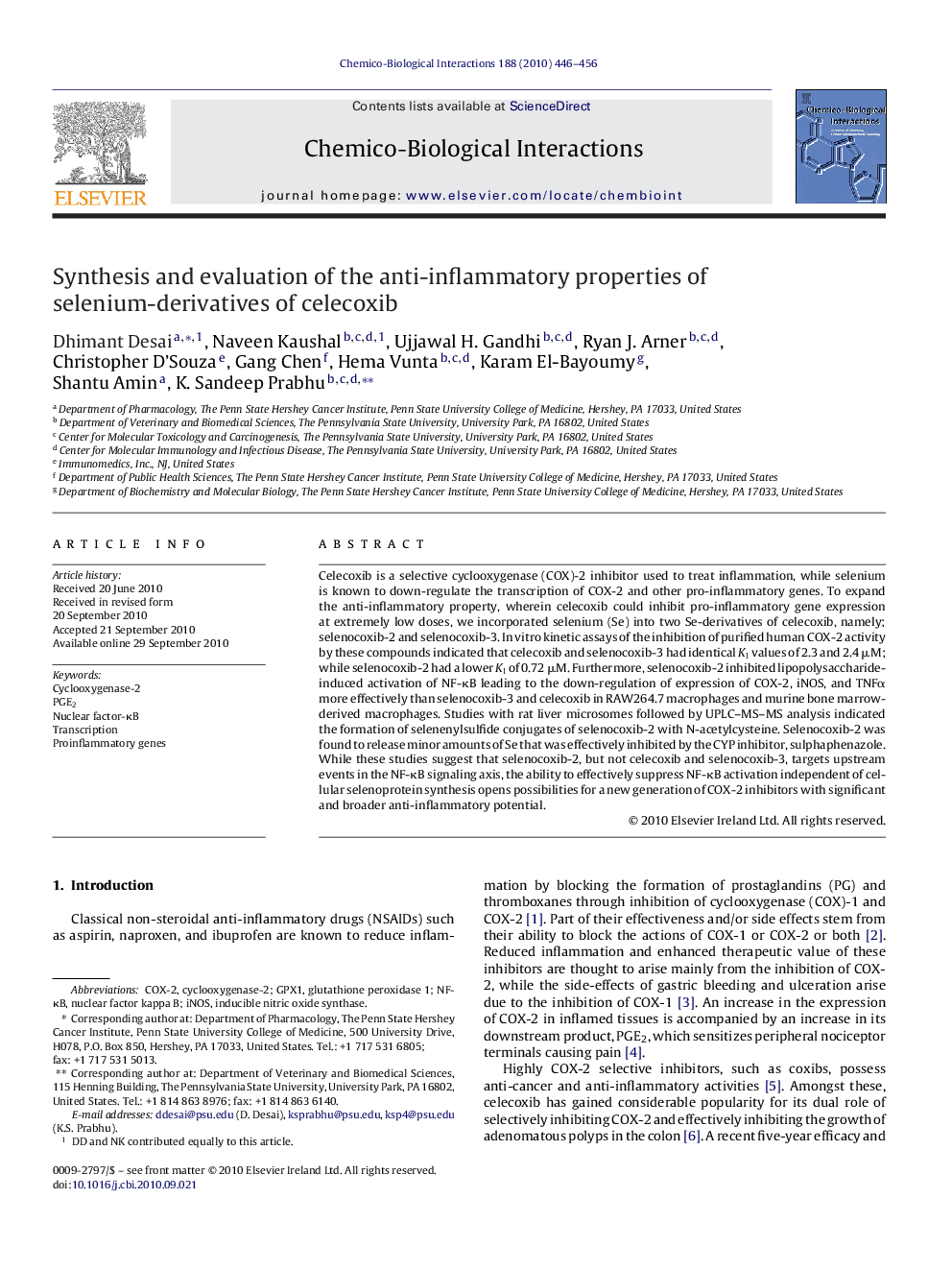| Article ID | Journal | Published Year | Pages | File Type |
|---|---|---|---|---|
| 2580952 | Chemico-Biological Interactions | 2010 | 11 Pages |
Celecoxib is a selective cyclooxygenase (COX)-2 inhibitor used to treat inflammation, while selenium is known to down-regulate the transcription of COX-2 and other pro-inflammatory genes. To expand the anti-inflammatory property, wherein celecoxib could inhibit pro-inflammatory gene expression at extremely low doses, we incorporated selenium (Se) into two Se-derivatives of celecoxib, namely; selenocoxib-2 and selenocoxib-3. In vitro kinetic assays of the inhibition of purified human COX-2 activity by these compounds indicated that celecoxib and selenocoxib-3 had identical KI values of 2.3 and 2.4 μM; while selenocoxib-2 had a lower KI of 0.72 μM. Furthermore, selenocoxib-2 inhibited lipopolysaccharide-induced activation of NF-κB leading to the down-regulation of expression of COX-2, iNOS, and TNFα more effectively than selenocoxib-3 and celecoxib in RAW264.7 macrophages and murine bone marrow-derived macrophages. Studies with rat liver microsomes followed by UPLC–MS–MS analysis indicated the formation of selenenylsulfide conjugates of selenocoxib-2 with N-acetylcysteine. Selenocoxib-2 was found to release minor amounts of Se that was effectively inhibited by the CYP inhibitor, sulphaphenazole. While these studies suggest that selenocoxib-2, but not celecoxib and selenocoxib-3, targets upstream events in the NF-κB signaling axis, the ability to effectively suppress NF-κB activation independent of cellular selenoprotein synthesis opens possibilities for a new generation of COX-2 inhibitors with significant and broader anti-inflammatory potential.
